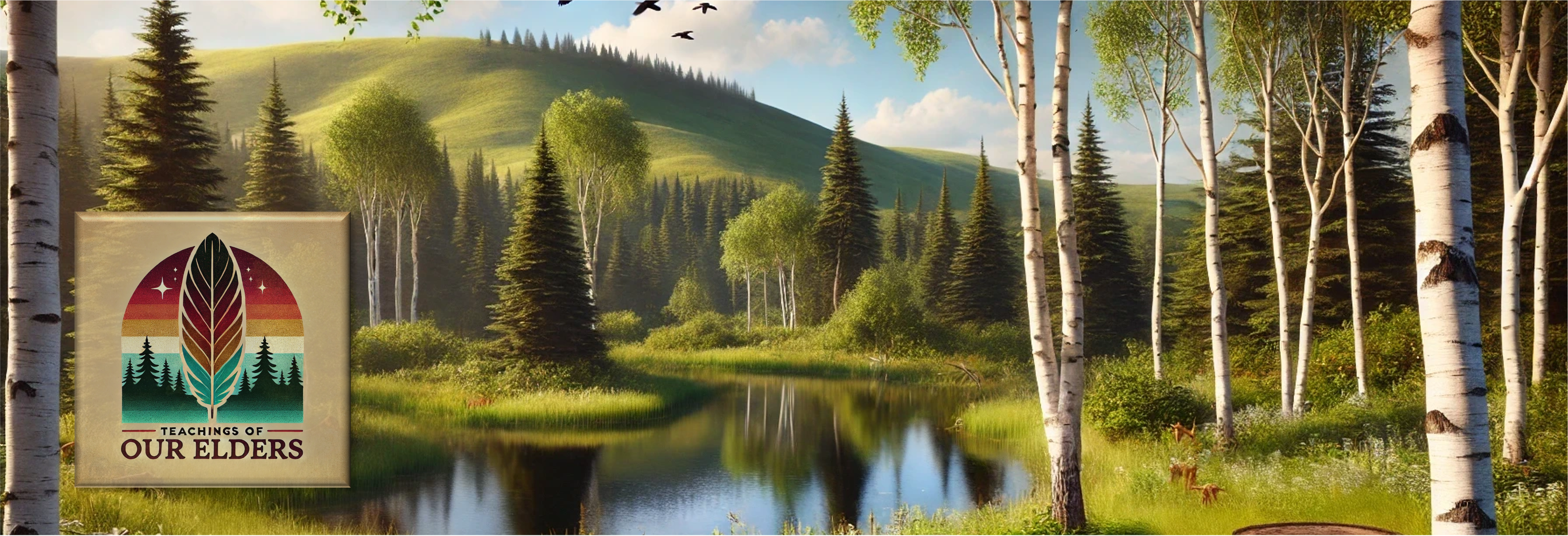| Inquiry Design Model (IDM) Blueprint™ |
| It Takes a Village to Raise a Child |
| NDNAEU 1 “Sacred Relatives”, NDNAEU 2 “Learning & Storytelling”, NDNAEU 5 “Tribal Policies, Treaties and Sovereignty”, NDNAEU 6 “Native Contributions”, NDNAEU 7 “Native Identity” |
| Compelling Question | Why do the Anishinaabe call a baby a bundle? |
| Standards and Practices | 8.8.3 Work cooperatively to advocate for healthy individuals, families, and schools. |
| Staging the Question | Traditional Anishinaabe people lived in villages and all cared for the well-being of the children. Who cared for the baby for the 1st six years? Who was responsible for that child after age 7? Who was responsible for the discipline of the child as it grew up in the village? |
| Supporting Question 1 |
| Have students read the Kinship and Circle of Life story. Have students do either a drawing or a two page essay including a cover page on the importance of family and why their roles are important to the child. Include what they learned from both of the articles and any questions they have relating to the two writings. |
| Formative Performance Task |
| Have the students share their writings in class or drawings or in groups of three and report back to large group similarities and differences they discussed. These can be written on poster board and a group leader shares out. |
| Featured Sources |
Anishinaabe Kinship Since the beginning of time the Anishinaabe have looked to family as being close and important to the development of children abinoozhiaz. One example I heard an elder say; “Each native child has 300 relatives watching them grow.” I thought that is a lot of relatives. Here is the example of how the Anishinaabe look at relatives. It is very different than western or mainstream society. Anishinaabe Child Anishinaabe parents. (Provide and protect child) Anishinaabe parents, maternal and paternal parents are child’s grandparents (Knowledge Keepers) Anishinaabe parents’ brothers and sisters are parent figures to the child. In fact, they are the disciplinarian for that child. Anishinaabe child’s grandparents’ brothers and sisters are also grandparents to the child. All first cousins of the child are considered brothers and sisters to the child. In fact, all first cousins’ children become the child’s nieces and nephews. Jt ShiningOne Side September 12, 2019 Circle of Life Story told to me from Francis Eagle Heart Cree. JT ShiningOne Side It is told to Anishinabe there are four roads or hills or a circle of life. We are born to our parents and given life. Our parents guide us through life. The mother and father are the first teachers of the child. Grandparents and extended family support and love this family while they raise the child or children. The child suckles from the mother’s breast and the child is wrapped in a beautiful rabbit fur robe or a fur hide and placed in a cradle board when the family is busy. At seven years old, the mother places a stone where the child’s breakfast would be placed. The child can place the stone aside or take the stone and walk to where the vision place is. The father follows to cover the child with cedar branches. The father returns to the village to wait for the child to have a vision. Once the child comes down, the vision is told to a Medicine person and the child begins to follow the new life path that has been chosen for him or her. The village supports this child by encouraging him or her to learn from all elders their cultural knowledge and stories. This is the way the stories of the Anishinabe stay alive. Miigwech, Marcee’ |
| SUMMATIVE PERFORMANCE TASK: Supported Claim (written/spoken) or Demonstration of Process (project-based) | Have students interview their parents, guardians, grandparents to get their input on the raising of children from their perspective. They can ask their specific questions from their writings. They should include the interview in their essay also. |
| SUMMATIVE PERFORMANCE TASK: Extension | Display students writings and or drawings in the hallway along with writings for others to learn about the raising of children and why they are raised by a village. |
| Taking Informed Action / Real World Application | Put students’ writings and drawings in the school newspaper or local newspaper. |

